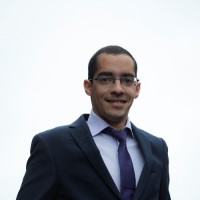Warrnambool is a coastal Victorian city known for its beaches and whale spotting, while Mariestad is a lakeside municipality in Southern Sweden known for its Renaissance cathedrals.

On face value, the two towns don’t have much in common.
But what they do share is vision for a sustainable future built on renewable hydrogen.
That’s why Warrnambool City Council has partnered with its Swedish counterpart on a solar-to hydrogen storage and refuelling program technology exchange.
Warrnambool sustainability officer Juan Donis says it’s part of Council’s plan to develop a world-leading hydrogen industry in Warrnambool and build a social license for the clean energy technology.
“We were looking at emissions profiles to see what we could do and we found that transport is one of the biggest factors,” he told Government News.
“We started looking around the globe to see which other cities have done in this space and we came across Mariestad.”
Mariestad, it turned out, had been using solar power to create hydrogen to power electric vehicles and heat buildings, and was the first city in the world to offer an off-grid hydrogen refuelling station to any citizen who bought a hydrogen car.
“We reached out to them and said we want to learn what you have done and how you brought the community along,” Mr Donis said.
International partnership forged
Enthused by Mariestad’s example, in April 2019 Council invited a delegation including Mariestad Mayor John Abrahamsson to Warrnambool to present their solution to council members, local researchers and the community.
During that visit the two cities signed a memorandum of understanding which contains a commitment to share information on renewable energy initiatives.
That information sharing arrangement will come in useful as Council proceeds with its plan to support the development of a local hydrogen research, manufacturing and supply chain hub.
In December 2019 Deakin received a $2 million federal Government grant for the Hycel Technology Hub, which aims to eventually help supply green energy at a competitive price to the community and power the region’s industry, transport and energy markets.
The planned 4.5ha hydrogen precinct site at Deakin’s Warnambool campus also will support fuel cell manufacturing, gas pipeline testing and the development of safety and standards protocols.
Last May Deakin announced it had appointed three project specialists to help establish the hub and turn it into a fully operational hydrogen research, testing and manufacturing facility.
Council is working with Deakin to lobby for state and federal financial support for the development, as well as leading community engagement and trust-building.
Mr Donis says the project aligns with council’s Warrnambool 2040 community plan which sets out a goal of becoming Australia’s most sustainable city and aims to achieve zero net greenhouse emissions, with a 20 per cent citywide reduction in emissions by 2026.
Well placed for hydrogen industry

In a submission to the state government on Victoria’s green hydrogen investment program, last year Vice Chancellor at Deakin University Professor Iain Martin said an economic futures strategy commissioned in 2019 by five local governments in Victoria’s south west – Great South Coast, Warrnambool, Corangamite, Glenelg, Southern Grampians and Moyne – found the region presented “strong precursor requirements and comparative advantages for developing a worldleading hydrogen economy”.
These included an extensive existing natural gas pipeline, storage and generation infrastructure; access to large amounts of clean water for electrolysis; a large wind power capacity and a major deep-water port at Portland with direct national rail freight network access.
“Specifically, the location of HyceL@Warrnambool leverages unique local attributes (including) a local government advanced in its approach towards the hydrogen economy (and) a global alliance the Swedish City of Mariestad, a world leader in hydrogen”, he said.





Leave a Reply